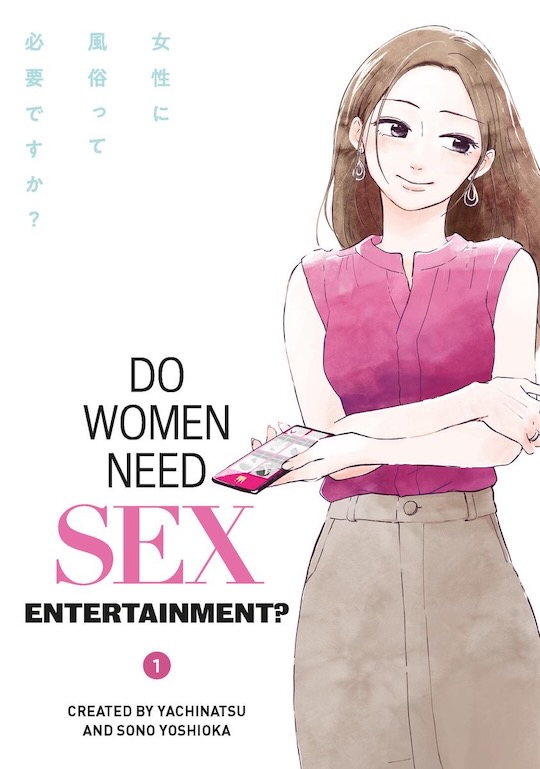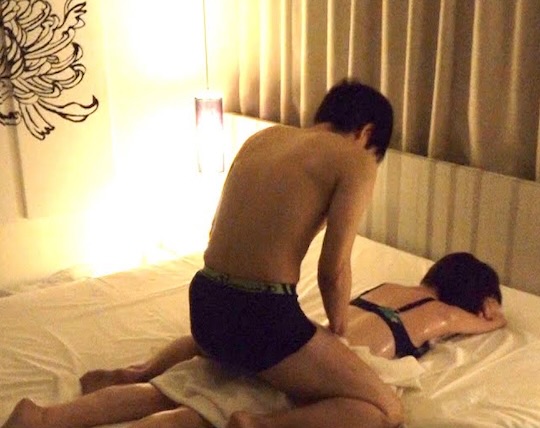Sexual services for women on the rise in Japan
According to an article in Weekly Women Prime, Japan is seeing a rapid rise in the number of establishments offering sexual services to women from male “therapists.”
The claim is based on extensive research by a manga artist, Yachinatsu (pictured), who has published on the topic of sexual services for women. Her manga Do Women Need Sex Entertainment Prostitution? has sold over 300,000 in Japan and been translated into English.

While the industry has become accessible enough that married people and those even in their sixties and seventies are using the services she says various risks must also be considered.
In the industry lingo, a female adult “entertainment” service is known as jofu (from “josei” and “fuzoku,” meaning women and sexual service, respectively).
“I don’t know if the increase in users is a good thing, but I’m happy that so many people have become aware that such a world exists,” Yachinatsu says.
“The types of people who use female brothels range from those simply seeking physical satisfaction, such as pleasure, to those seeking emotional satisfaction, such as someone to listen to them or company because they’re lonely. In addition to receiving sexual pleasure, some people use them just for dates, or even as a jack-of-all-trades, such as having someone come get rid of a cockroach in their house. Since you’re paying for time, you’re free to spend it however you like.”

Services often camouflage what they offer with terms like “erotic massage,” a sensual massage that stimulates pleasure through massage of the entire body and erogenous zones. Actual sex is technically prohibited by law, though we imagine is quite common (like with sexual services for men).
Yachinatsu says that average cost is ¥15,000 yen for 90 minutes, though this does not include things like the nomination fee (for specifying who you would like to service you), transportation costs, and love hotel fees.
“What surprised me during my interviews was the large number of male therapists. Unlike women, many start out on a whim, and there are cases of university students or regular office workers doing it as a side job. Recently, the number of businesses has been increasing, with large and small businesses opening their own, and although awareness of jofu has spread, there are still not that many customers, which is a bit worrying.”
It seems that becoming a therapist requires a certain level of technique and determination to pass the practical exams and training period.

“Therapists range in age, but most are in their thirties and forties. Young women tend to prefer older men, so older therapists are highly sought after. There are even salons that specialize in older men.”
What kind of women tend to be the clients?
“There is a wide variety of clients, from sexless housewives and women with no experience with men to those looking to experience orgasm. Even those with husbands or partners can sometimes feel in a rut, so I think regular use helps them find peace of mind.”
There are also older clients.
“The oldest person I’ve spoken to is a 75-year-old woman. Therapists often tell me, ‘Women are always worried because they’re old or fat, but there’s no need to worry about it at all.’ They say that even if a customer is young and pretty, they’ll feel put off if they’re asked to do something outrageous or if she has a condescending attitude.”
In her manga, a female customer gets excited when a crayfish is stepped on in front of her, and Yachinatsu says this scenario is based almost entirely on reality.
“One of the benefits of is that even if you have unusual sexual preferences, the therapist will accept it professionally.”
Clients find therapists and services on social media.
“Therapists usually use X to attract customers. If you see someone on the service website who looks like he has a nice aura, you can search for him on X and send them a direct message. It’s fine to communicate directly even if you don’t want to make a reservation. Unless they’re extremely popular, they will reply.”

For therapists, it’s a win-win situation, the article says, as they feel more comfortable with a woman they’ve interacted with than a complete stranger.
“I often hear stories of people choosing a therapist based on his appearance or randomly ordering someone who’s available, only to find he was a bad fit. Some people actively use the live streaming app TwitCasting, so it’s a good idea to check out his personality, voice, and how he speaks.”
What about unwanted sexual intercourse? Do some therapists or clients take advantage?
“It’s not impossible. It seems there are quite a few cases where things start out consensual, but then the therapist complains later about a lack of consent. When I interviewed a top therapist at a major service, I heard that the more popular they are, the less likely they are to get an erection. This is partly because they do a lot of work, but the more skilled they are, the more focused they are on the treatment, so even if they’re excited, they’re not in the mood.”
There are also clients who become stalkers, who may end up banned.
“Those with little romantic experience or who know they’re prone to addiction should be careful. It’s a good idea to set your own rules, like not requesting the same person multiple times, extending the time, or offering gifts so you don’t get too attached. Some heavy users even use different therapists five times a week but for different purposes, such as erotic pleasure, shopping, or dates, to avoid relying on a single person.”
Ultimately, Yachinatsu concludes, these services are not simply about getting the client off. “These services are not just about satisfying sexual desires. They are also a way for women to fulfill emotional needs.”















3 Comments
“Young women tend to prefer older men, so older therapists are highly sought after.”
Ok, I’m definitely updating my retirement plan now.
Tadashi please give us links to some of these places so we can apply
Time to brush up on my sensual massage skills!
With the huge numbers already working the night trade, would have thought they were already getting all the “action” they can handle without paying someone.